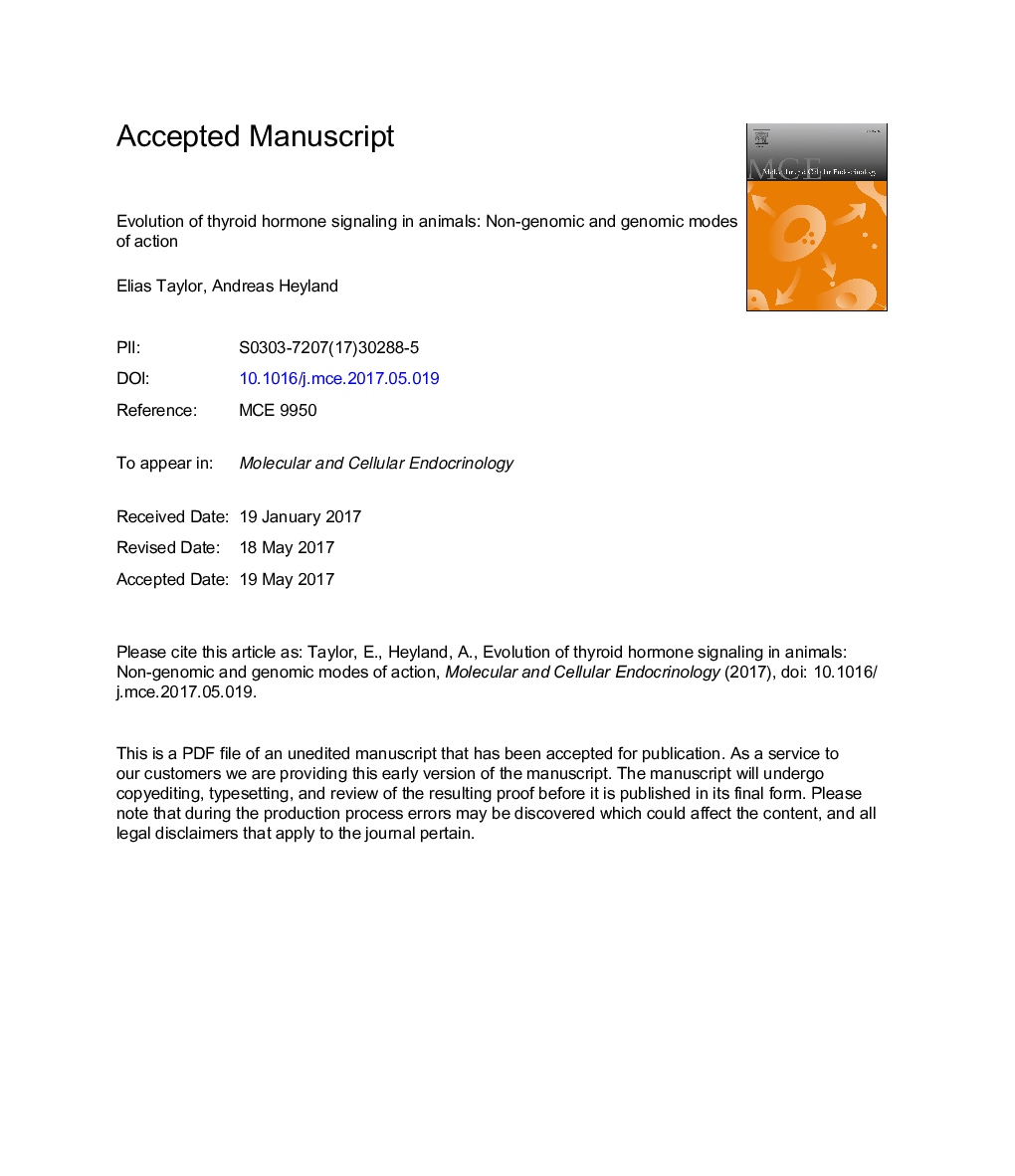| Article ID | Journal | Published Year | Pages | File Type |
|---|---|---|---|---|
| 8476624 | Molecular and Cellular Endocrinology | 2017 | 28 Pages |
Abstract
Much research has focused on vertebrate thyroid hormone (TH) synthesis and their function in development and metabolism. While important differences in TH synthesis and signaling exist, comparative studies between vertebrates fail to explain the evolutionary origins of this important regulatory axis. For that, one needs to make sense out of the diverse TH effects which have been described in invertebrate phyla but for which a mechanistic understanding is largely missing. Almost every major group of non-vertebrate animals possesses the capability to synthesize and metabolize thyroid hormones and there is evidence for a nuclear thyroid hormone receptor mediated mechanism in the bilateria, especially in molluscs, echinoderms, cephalochordates and ascidians. Still, genomic pathways cannot fully explain many observed effects of thyroid hormones in groups such as cnidarians, molluscs, and echinoderms and it is therefore possible that TH may signal via other mechanisms, such as non-genomic signaling systems via membrane bound or cytoplasmic receptors. Here we provide a brief review of TH actions in selected invertebrate species and discuss the hypothesis that non-genomic TH action may have played a critical role in TH signaling throughout animal evolution.
Keywords
Related Topics
Life Sciences
Biochemistry, Genetics and Molecular Biology
Cell Biology
Authors
Elias Taylor, Andreas Heyland,
